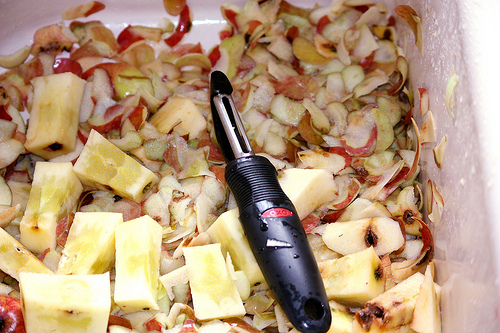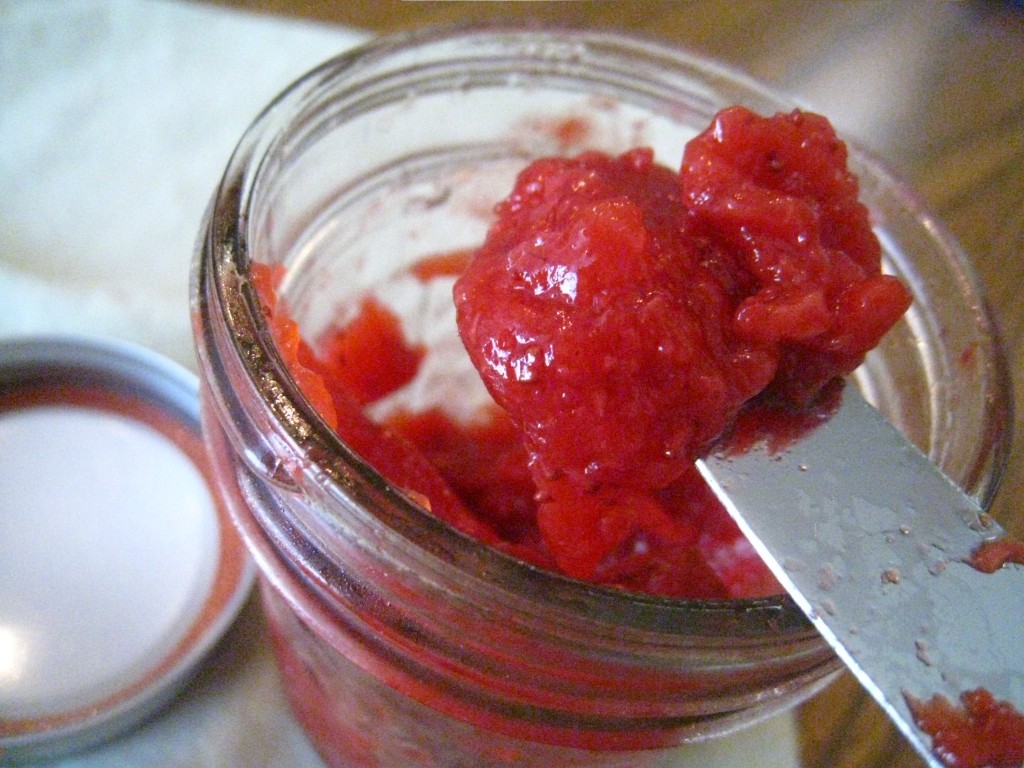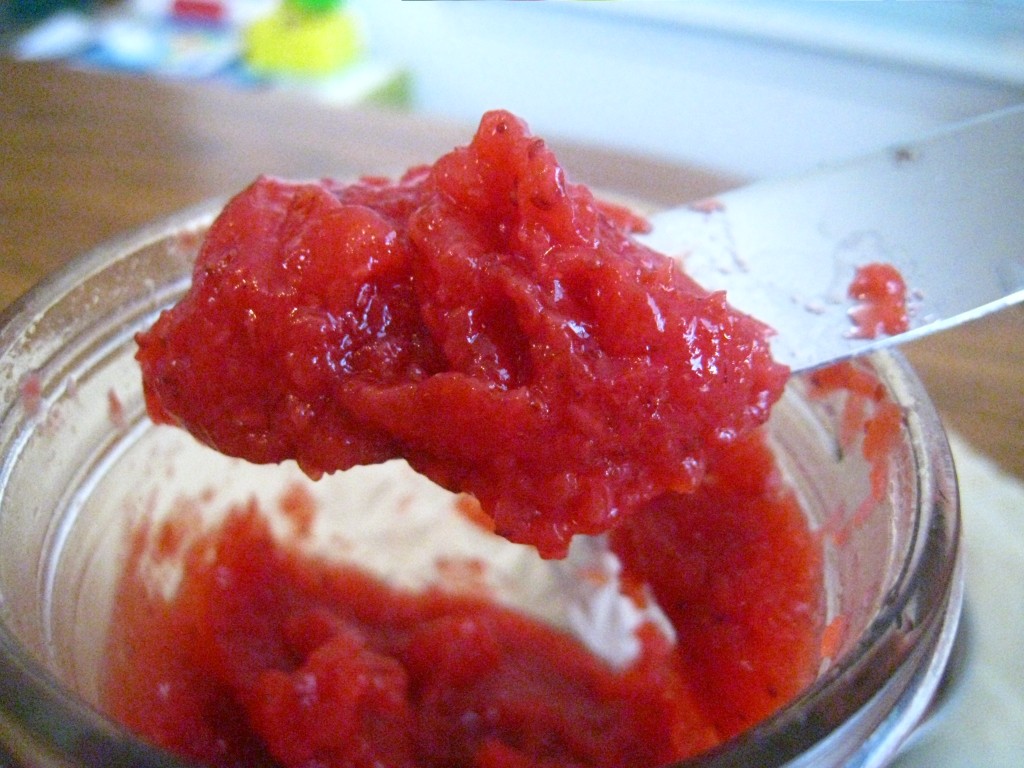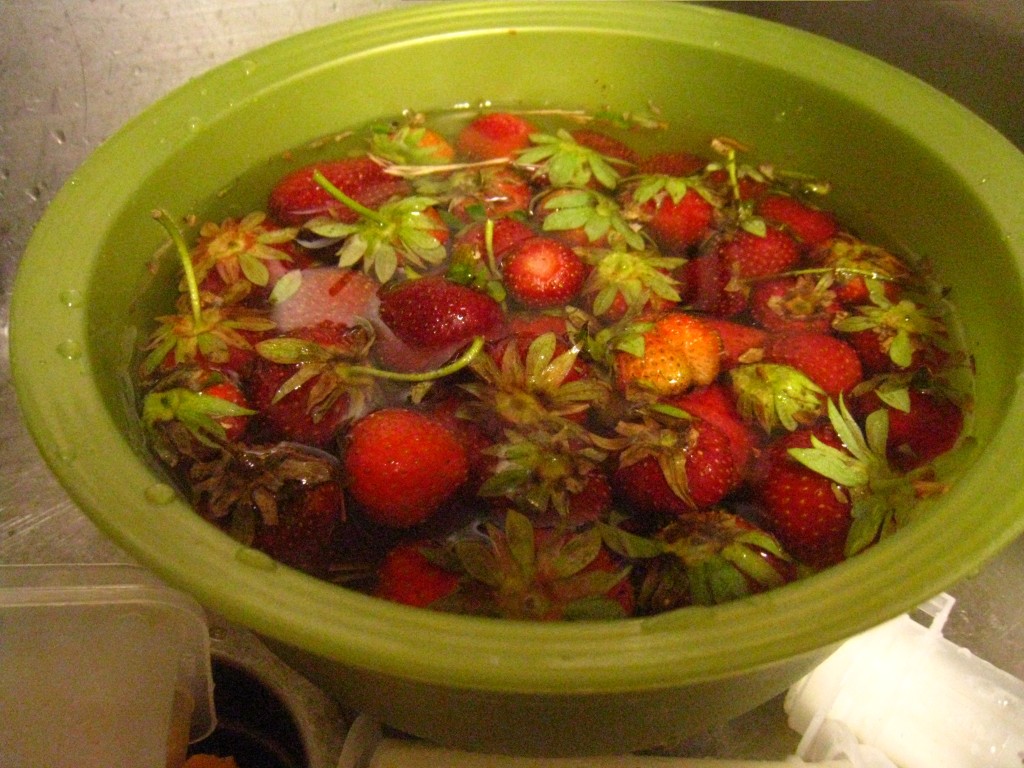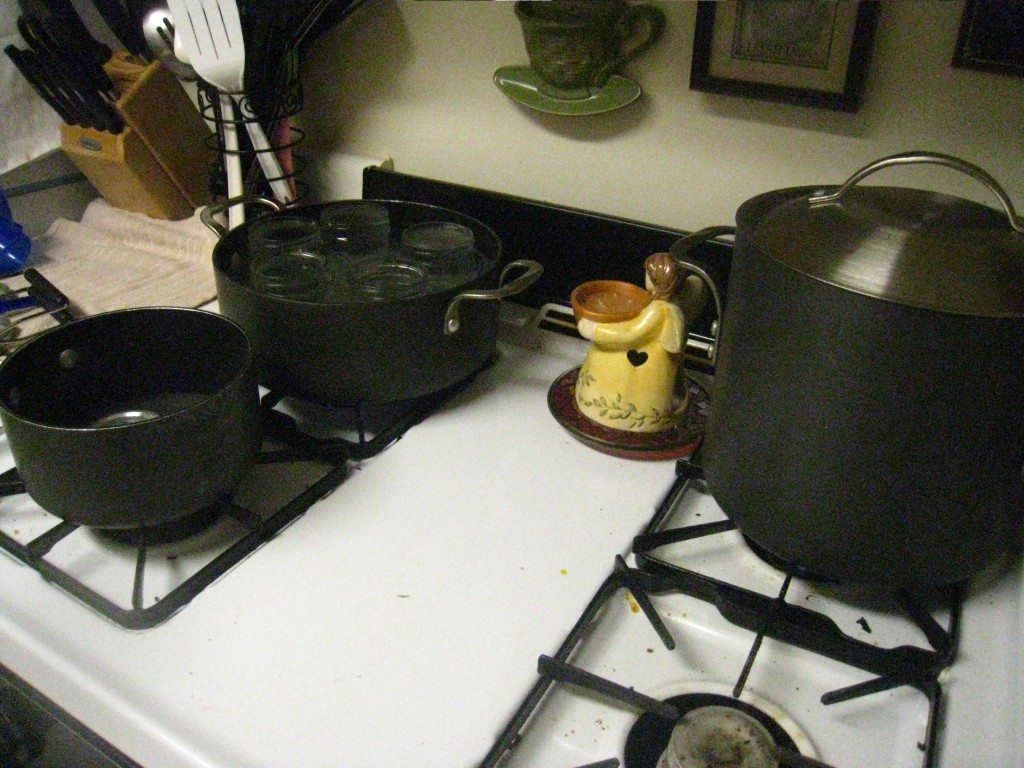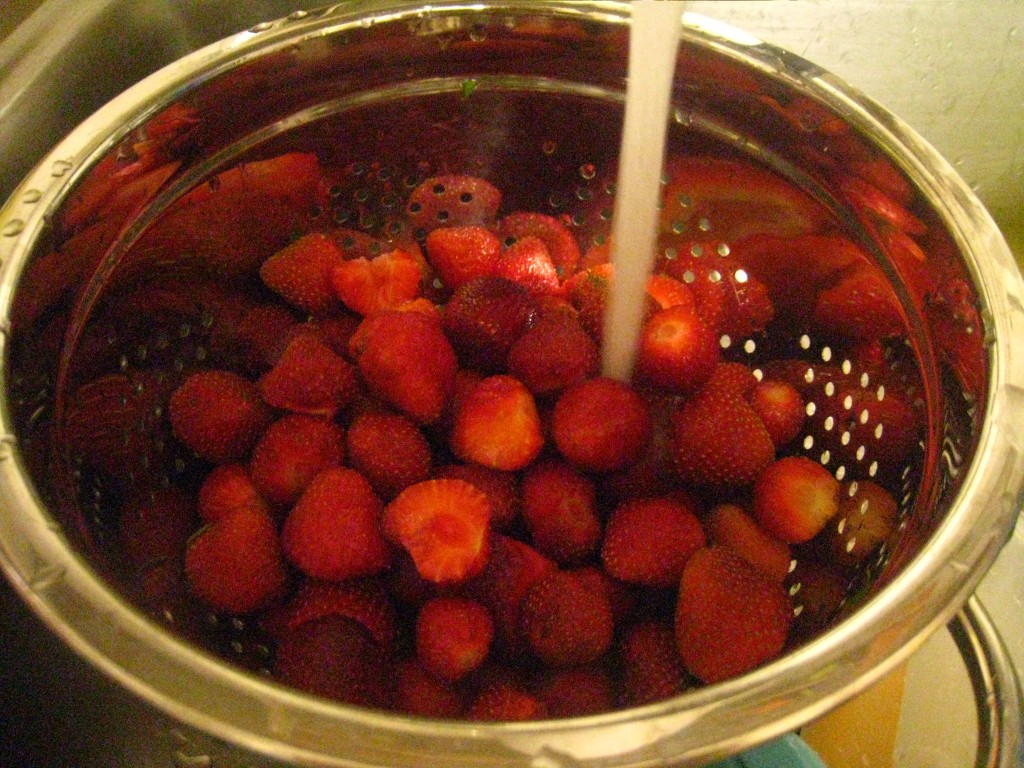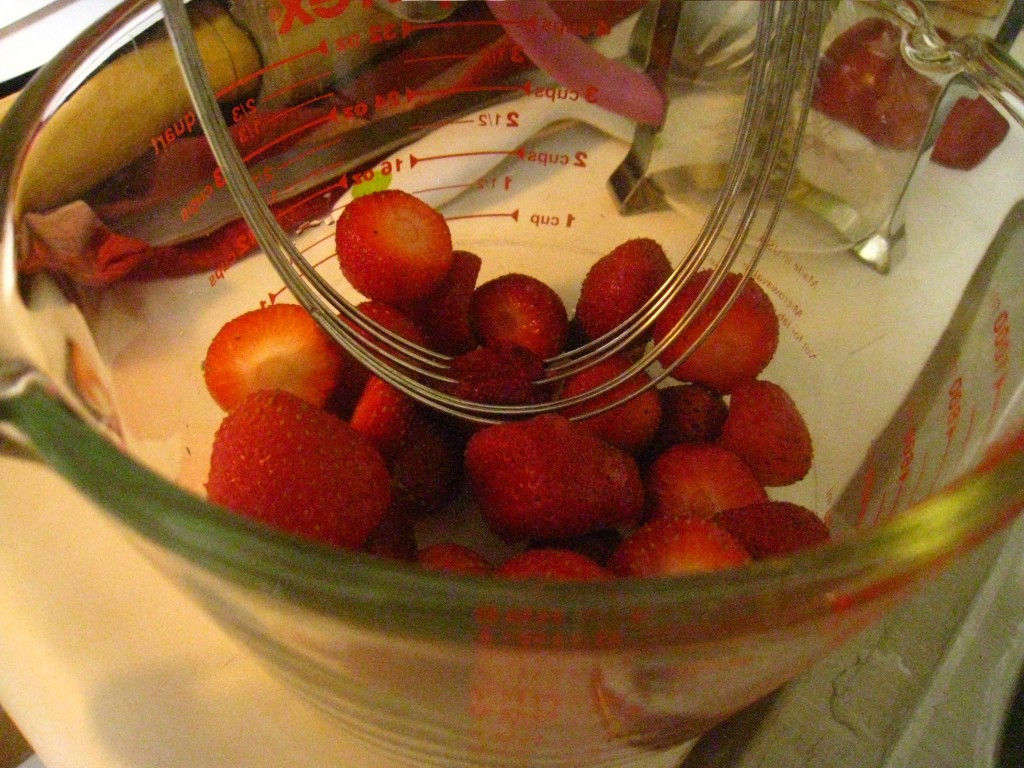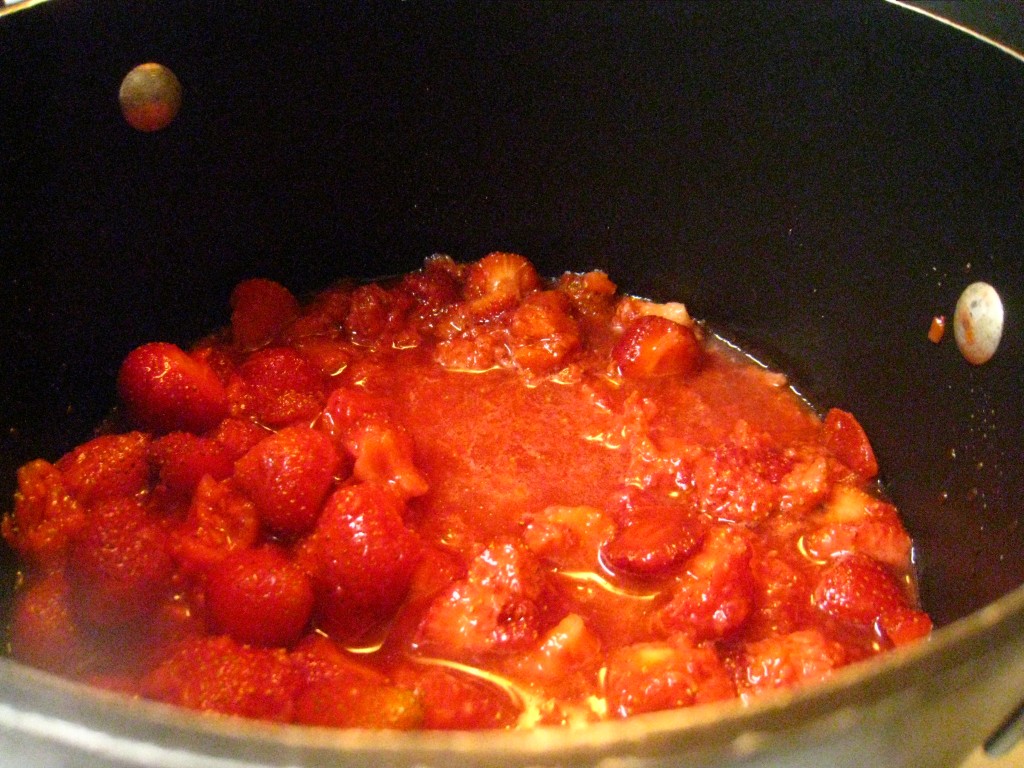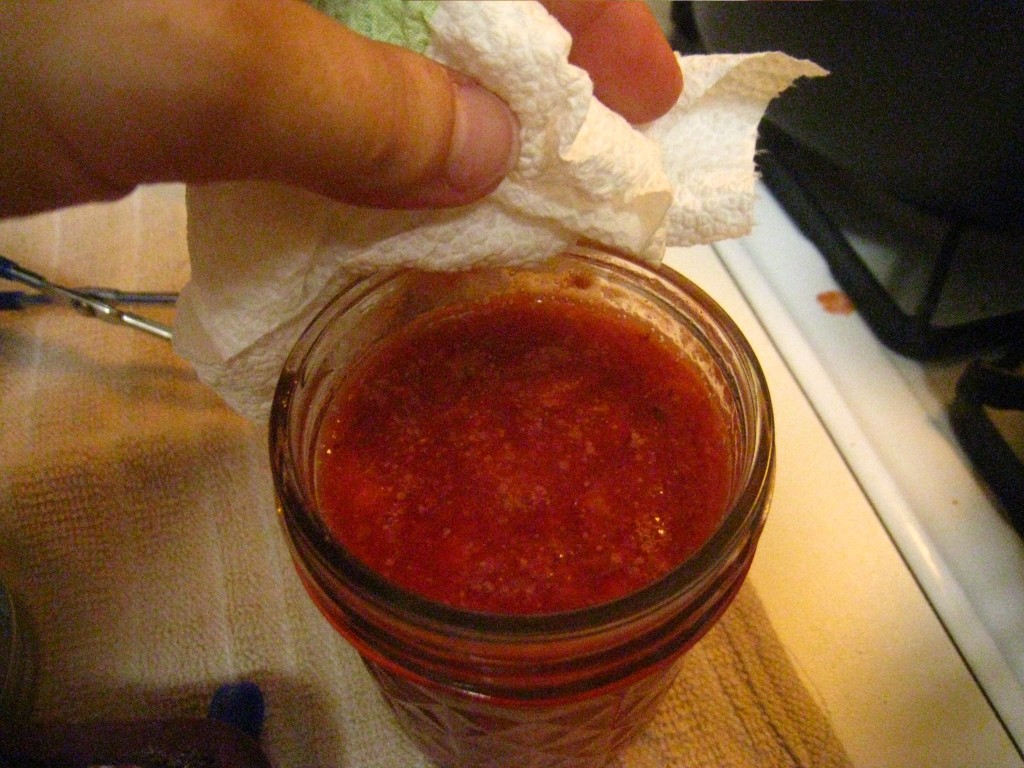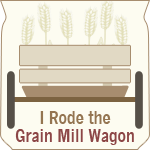For the past few years, I have enjoyed making my own jam. I love that it’s healthier than storebought jam because I use fresh local fruit and very little sugar (sometimes I even use honey!). I also love that it’s very easy to make and doesn’t take a great deal of time.
Last year, feeling comfortable with the whole jam-making process, I decided to step it up a notch and try my hand at homemade pectin.
What Homemade Pectin Is
Pectin, as I’m sure you know, is what holds the jam together. Pectin is what causes the jam to “set” and become more solid than liquid. Pectin comes from fruit, and apples are particularly rich in pectin.
Most people are familiar with store-bought pectin that comes in powder form and is sold in little boxes. Sometimes people do without any specific source of pectin at all and just boil the living daylights out of their fruit to release the pectin inside it. And sometimes people make their own pectin by boiling the living daylights out of apples.
How to Make Homemade Pectin
The process of making your own pectin is actually quite straightforward: simply cover a large amount of apple “leavings” (peels and cores) with water and then boil for several hours. Strain through a lined mesh sieve and store the remaining liquid in the freezer or in processed jars. If you would like more specific instructions, please see Fig Jam and Lime Cordial’s excellent tutorial on homemade pectin here.
How to Use Homemade Pectin
Using homemade pectin is not nearly as straightforward a matter as making it. That’s because the amount of pectin found in fruit varies greatly, and homemade apple pectin does not come with a chart to tell you how much you should use.
Another element of jam-making adds even more trickery to the issue, and that is sugar. You have to have the proper ratio of sugar to pectin if you ever want your jam to set.
Furthermore, you’re going to need a little bit of lemon juice, which is also essential to the gelling process.
And, of course, how much you use of each of these ingredients depends entirely on how much fruit you have and what kind it is.
Complicated much, yes?! Once again, I will refer you to Fig Jam and Lime Cordial and their Jam Making Primer. But to sum up, when making jam with your own homemade pectin, you need to combine the appropriate amounts of fruit, pectin and lemon juice into a pot and bring it to a full rolling boil. Once the fruit has softened, add the appropriate amount of sugar and bring it back to a boil. Boil the living daylights out of it until it sets. If it doesn’t set, add more sugar or pectin and boil it some more.
Why I Don’t Use Homemade Apple Pectin
Homemade apple pectin seemed like such a frugal and healthy idea - an all natural, chemical free alternative to store-bought pectin that I could make from apple scraps I would normally throw away. Brilliant, right?! Once I read about it, I was determined to give it a go. After excitedly bottling up and freezing several jars of homemade apple pectin during the peak of apple season last fall, I was anxious to try my hand at jam made completely 100% from scratch with the onset of berry season this year.
Imagine my dismay when my experiment was a complete and total flop. Oh, my jam “set” just fine. After I had almost completely boiled it away, that is. And added way more sugar than I usually do. And slaved over a hot stove for much longer than I usually do. And got spattered by hot bubbling jam more than ever before.
I decided that I would never bother with homemade apple pectin again. Why? Oh, let me just count the reasons why:
- Making the pectin was easy, but it was kind of time-consuming. And it took up valuable real estate in my freezer.
- I had to boil the jam for. ev. er. Usually, jam takes me about an hour, start to finish. With the apple pectin, it was easily twice that long.
- I started with four cups of mashed fruit, the typical amount used in an average batch of jam made with store-bought pectin. Typically, that amount will yield 3-4 pint jars of jam. How many pints did I get from my batch made with homemade pectin? One. Just one.
- The pectin I usually use requires only 1/4-1/2 cup of sugar (I usually use unrefined sugar) or honey. I can’t remember exactly how much sugar I used with the apple pectin, but it ended up being considerably more.
- I had to boil the fruit down for so long that I highly doubt any nutritional value is left.
- Also because of the lengthy boiling time, the resulting jam tastes cooked rather than fresh.
- Getting the jam to set when using apple pectin is much more tricky than when using store-bought pectins, because you have to get the ratio of pectin, sugar and acid just right or it won’t work. And you have to test it to see if it’s set, which is, in my opinon, a waste of good jam!
To sum up:
It’s not QUICK - it takes forever!
It’s not EASY - it involves a lot of work and a more knowledge of jam-making than I possess.
It’s not CHEAP - the pectin might be practically free, but if my yield is less than a quarter of what I would get otherwise, it is not at all worth it.
It’s not HEALTHY - all the nutrients are boiled away, so you’re mostly left with concentrated sugar held together by fruit juices and some pulp.
What I Use Instead
My one experience with apple pectin was enough to convince me to return to my favorite old standby, Pomona’s Pectin. Pomona’s Pectin is incredibly easy to use, is all natural, and requires only 1/4-1/2 cup sugar for most recipes. It also works with all kinds of sugar alternatives, including stevia and honey. I have never had a batch of jam fail in all the time I’ve been using Pomona’s Pectin, and it sets up very quickly - within a minute! No constant boiling, stirring, and testing for a proper set.
I wish Pomona were paying me to say this, but she’s not. The honest truth is: I LOVE THIS STUFF!
What kind of pectin do you like to use?
Sharing at Titus 2sday, Traditional Tuesdays, Homestead Barn Hop, Healthy 2Day Wednesday, Women Living Well Wednesday, Whole Foods Wednesday, Works for Me Wednesday, Real Food Wednesday, Frugal Days Sustainable Ways, Tastetastic Thursday, Simple Lives Thursday

